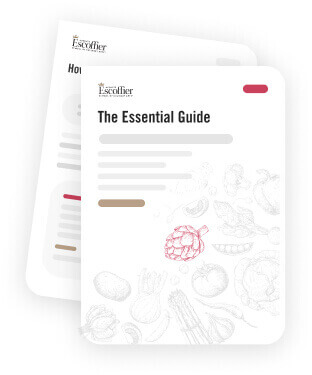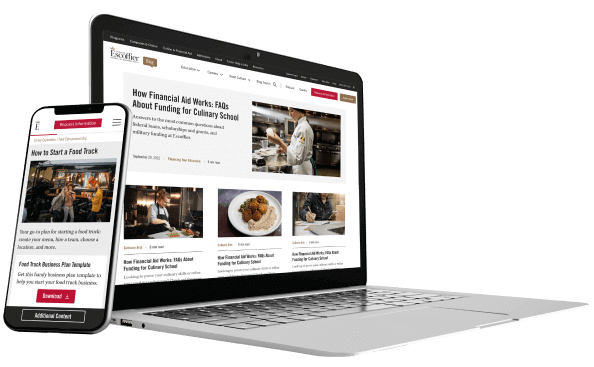Listen to This Article:
One of the most interesting parts of working with food is the ability to blend tradition with innovation. Nowhere is that more apparent than in molecular gastronomy, where chefs use science to transform ingredients in new ways that challenge expectations and help enhance the dining experience.
Imagine a dish that literally floats above your plate, a sauce that melts in thin air, or a dessert that bursts with intense flavor with each bite. Molecular gastronomy is more than just cooking—it’s an experience.
But what exactly is molecular gastronomy? And do you need a science degree or a high-tech lab to experiment with it?
In this guide, we’ll explore the origins of this innovative culinary style and how you can experiment with it in your own home or restaurant kitchen.
What is Molecular Gastronomy?
When we think of molecular gastronomy, we often imagine edible gasses, liquids turned into uniform spheres, and deconstructed dishes spread across a plate. And those techniques are part of the practice of this food science.
But at its core, molecular gastronomy is simply the science behind how cooking transforms food on a physical and chemical level. For example, the effect of temperature on eggs is something molecular gastronomists would study. When put into practice by innovative chefs, it’s a way to push the boundaries, rethink classic dishes, and create new ones that excite the senses.
The term was coined in 1988 by Hungarian physicist Nicholas Kurti and French chemist Hervé This. But food science was around for many years before that. As far back as the early 1800s, famous chef Marie-Antoine Carême noted that heating the broth for a stock too quickly prevented the liquid from penetrating the meat and resulted in a thinner base.
*Information may not reflect every student’s experience. Results and outcomes may be based on several factors, such as geographical region or previous experience.
The chemistry of food was further explored through the 1900s, but research was often conducted by large manufacturers with the aim of increasing the shelf-life of prepared foods.
The application of molecular gastronomy science to new cooking methods and innovation began to gain traction after Kurti and This began their International Workshops on Molecular and Physical Gastronomy in 1992. These sessions involved the study of culinary phenomena like aroma release, how different cooking methods change the texture and flavor of raw ingredients, and the impact of mood and presentation on our enjoyment of food.
Molecular Gastronomy in Practice
In reality, the term “molecular gastronomy” is a bit of a misnomer. According to Hervé This, molecular gastronomy is the scientific field. But molecular cooking is what chefs do with it. Other chefs prefer the terms avant-garde cuisine, experimental cuisine, deconstructivist cooking, and new cuisine.
Starting in the mid-to late 1990s, chefs began using this approach to transform food and design new textures and flavors. Several chefs have earned their Michelin stars by the application of these new techniques to their creations.
By separating out flavors and reconstituting them into unexpected forms, chefs can continue to delight and excite diners. Restaurants like Chicago’s Alinea and Copenhagen’s Alchemist have experimented with dishes and pushed the boundaries of molecular gastronomy. For example, guests at Alinea can order a helium-filled, floating, edible apple taffy balloon. And at Alchemist, guests have ordered edible “eyeballs” made from ingredients like minced shrimp, peas, and pistachios and then topped with black caviar.
This modern blending of food and performance highlights how chefs are using modern molecular gastronomy not just for the food, but to create an immersive, multi-sensory dining experience. It challenges the way we think about food.
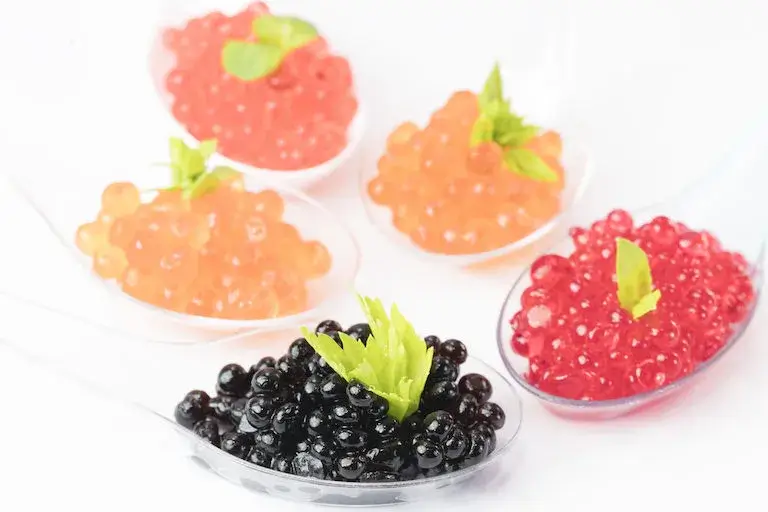
Molecular gastronomy brings innovation to the plate, turning liquids into caviar-like pearls with spherification for a unique sensory experience.
Molecular Cooking Begins with Understanding the Basics
But before you can begin to rethink dishes using molecular gastronomy, it’s important to understand culinary principles and techniques. If you don’t understand flavor profiles and dish composition, how will you ensure that it actually tastes good?
Innovation in food science, just like art, requires that you have a solid understanding of the fundamentals. Escoffier students can cover the theory and chemistry of various ingredients and pastry arts.
A culinary school education could provide the necessary foundation for a future of excitement and innovation in the kitchen.
7 Techniques Molecular Gastronomists Rely On
Molecular gastronomists use a wide variety of new and innovative cooking methods and ingredients. Here are just a few of the techniques used to achieve unexpected shapes, textures, and ornamentation.
1. Flash Freezing
During flash freezing, liquid nitrogen or specialized equipment is used to quickly solidify the liquid inside of fruits and vegetables, without creating large ice crystals. This method helps preserve the freshness, flavor, and texture.
For example, grapes can be flash-frozen to create a naturally sweet, sorbet-like snack, vegetables like asparagus can be freeze-blanched to maintain their vibrant color and crispness, and thin slices of wagyu beef can be flash-frozen for precise, paper-thin cuts used in dishes like carpaccio.
2. Sous Vide
Sous vide is a cooking technique where food is vacuum sealed and cooked slowly in a warm water bath. The technique was invented to help improve hospital food in 1969 by extending its shelf life and improving the flavor. However, chefs soon discovered that this long and slow style of cooking also helped food retain moisture while creating tender textures.
Examples of times you may use sous vide include:
- Soft-Poached Eggs: The precision control of sous vide can result in eggs with velvety whites and creamy yolks, making them great options to use in eggs benedict, ramen, or with breakfast toast. The eggs are cooked for 45 minutes at 145°F.
- Chicken: Using sous vide can help avoid overcooking chicken breasts. Cooking for 2 hours at 145°F can help ensure the chicken stays moist and flavorful once it’s fully cooked. Holding the chicken at 145°F for a longer period of time like this will kill bacteria the same as cooking the chicken to an internal temperature of 165°F.
- Carrots with Honey and Butter: Sous vide can help vegetables retain their natural sweetness, color, and texture. Cooking carrots for an hour at 183°F with honey, butter, and a pinch of salt can help them become more flavorful and tender but not mushy.
3. Dehydration
Dehydration slowly removes water from food, helping to concentrate their flavors and sugars. Food is typically dehydrated using low heat and airflow to slowly remove moisture while retaining the nutrients. This is often done with the help of a food dehydrator or low-temperature oven drying. This method of cooking can help preserve food for long-term use.
Common examples of dehydrated foods include strawberries being dehydrated and ground into powder for desserts or tomatoes being dried to enhance their flavor before being used in sauces. Beef is also commonly dehydrated and turned into jerky to create a chewy, flavorful snack that is full of protein.
4. Powderization
Chefs can use maltodextrin to incorporate fats in a new way. It is a food starch that can turn high-fat liquid into a powder that melts-in-your-mouth. This technique is often used to deliver an intense flavor through an unexpected texture.
Common examples of maltodextrin include:
- Peanut butter powder: Turns creamy peanut butter into a powdery form that dissolves on your tongue, making it easy to sprinkle over desserts or mix with other ingredients for baking.
- Olive oil powder: Can be used to garnish salads or to finish plates without adding extra liquids while maintaining the rich flavor of olive oil.
- Bacon fat powder: Adds a smoky, savory taste that can be dusted over foods like popcorn, roasted vegetables, and chocolate-based dessert for a sweet-savory contrast.
5. Gelling
Agar agar is a plant-based gelling agent derived from seaweed extract used to create gels, mousses, or structural spheres out of liquid. This technique allows chefs to create gels to add structure and texture to dishes.
Examples of when you may use agar agar include:
- Fruit juice “caviar”: Agar agar is used to form tiny spheres of flavored liquid that will burst in your mouth. They’re often used in desserts and cocktails to add a creative texture.
- Vegan panna cotta: The plant-based gel can be used to create a dairy-free version of this classic Italian dessert, providing a smooth, creamy consistency.
- Agar-thickened jam or jelly: Agar agar can be used to create a low-sugar fruit preserve that is firm, yet spreadable.
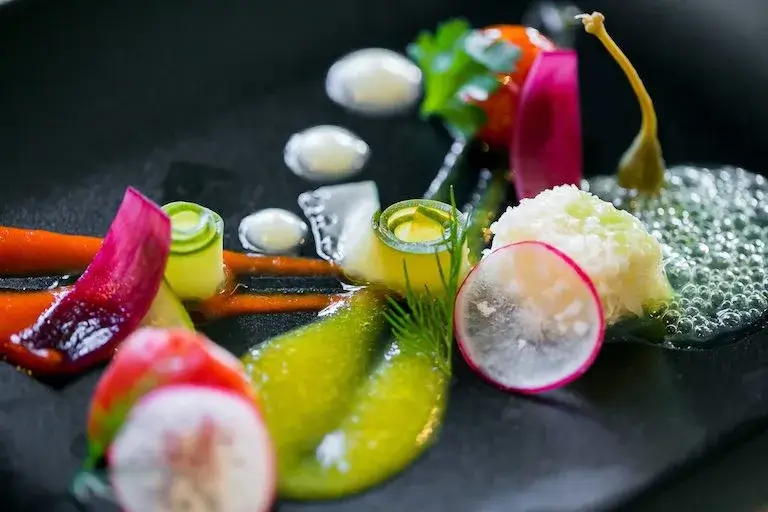
Molecular gastronomy transforms ingredients into unexpected textures, from vibrant spheres to delicate foams, creating an artistic and modern culinary experience.
6. Emulsification
Foams are created by introducing air into liquids resulting in a light, airy texture. This technique can use whipped cream dispensers, immersion blenders, or stabilizing agents like lecithin powder. Chefs can use foams to transform sauces, broths, and purees.
Espresso foam is a coffee-infused froth that can be added to chocolate-based desserts or cocktails to add a bittersweet contrast. Parmesan foam is a light, cheesy topping that can add flavor to pasta dishes without using a traditional heavy sauce. And coconut foam is often used as a tropical garnish on desserts and cocktails.
7. Deconstruction
In deconstruction, dishes are broken down into their component parts, allowing guests to appreciate each piece and create individualized flavor combinations. It’s a creative way to highlight the individual ingredients, enhance textures, and engage diners, making dishes feel new and exciting.
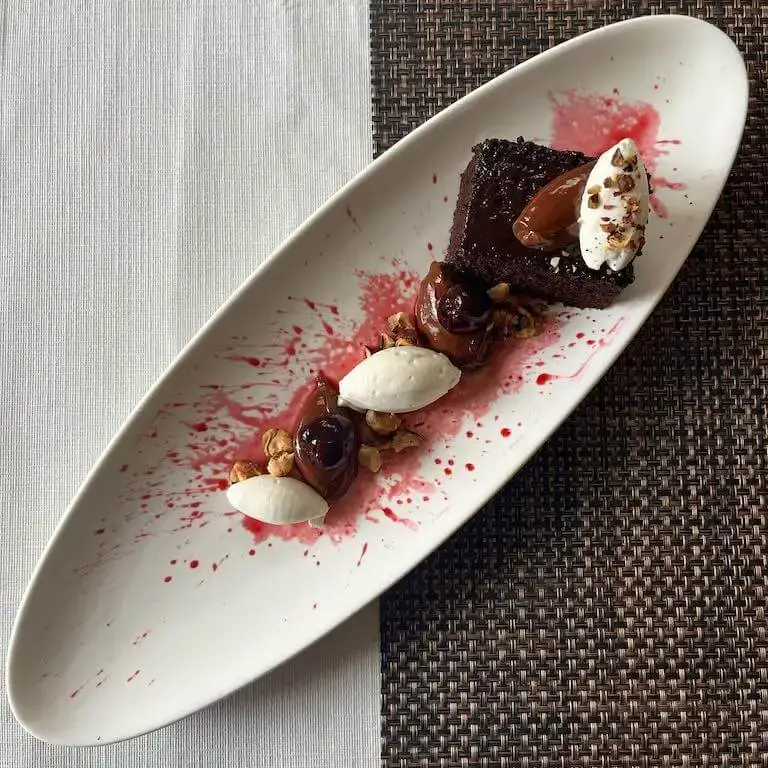
Deconstructed Black Forest Cake by Escoffier Baking & Pastry Graduate, Fahana B.
Examples of deconstructed dishes include:
- Deconstructed cheesecake: Graham cracker crumbles, cheesecake mousse, and fruit compote are plated separately, allowing diners to mix and match the textures and flavors.
- Deconstructed s’mores: Chocolate ganache, torched marshmallow fluff, and graham cracker dust is presented in a way that maintains the classic flavor but presents it in a whole new way.
- Deconstructed burger: Toasted brioche chips, beef crumbles, and tomato gel arranged separately give a new modern take on the classic burger.
These are just several of the culinary techniques that fall under the molecular cooking umbrella. And one of the benefits of culinary school is the opportunity to learn different techniques to make great food. As technology continues to advance, it will be fascinating to see what the next generation invents.
Essential Kitchen Tools for Practicing Molecular Cooking at Home
Molecular gastronomy is more accessible than ever with just a few key tools:
- Kitchen scale – Accuracy is essential for measuring specialty ingredients in molecular cooking.
- Thermal immersion circulator – Sous vide cooking ensures precise temperature control for meats, vegetables, custards, and infused oils.
- Agar agar & maltodextrin – Agar agar enables spherification, while maltodextrin transforms liquids into powders for creative presentations.
- Whipped cream dispenser – Ideal for making foams, espumas, and infused sauces to elevate dishes.
- No special tools required – Some molecular techniques, like making sugar glass or deconstructing a dish, can be done with everyday kitchen items.
Liquid nitrogen can be dangerous, so we don’t recommend experimenting with it outside of the supervision of an experienced chef. With these other tools, you can experiment with cutting-edge techniques and bring a modernist touch to your home kitchen.
Building the Foundation
Molecular gastronomy reminds us that cooking is as much science as art. And like any good artist, a chef needs to understand the basics of their craft before they can be truly innovative.
Culinary school graduates can be introduced to palate development and sensory awareness, enhancing their ability to critically evaluate different types and styles of food. Even if you prefer your liquids to be wet and your chicken to be solid, learning the science behind these innovative cooking techniques can make you a more well-rounded cook.
Start your lifetime of culinary learning with a quality education in Culinary Arts or Pastry Arts at Escoffier.
WANT TO ELEVATE YOUR CULINARY SKILLS EVEN FURTHER? CHECK OUT THESE RELATED ARTICLES:
- 6 Advanced Baking Techniques Every Pastry Chef Should Know
- How To Make The Five Mother Sauces
- What Skills Do You Need to Become a Chef?
This article was originally published on April 29, 2016 and has since been updated.
